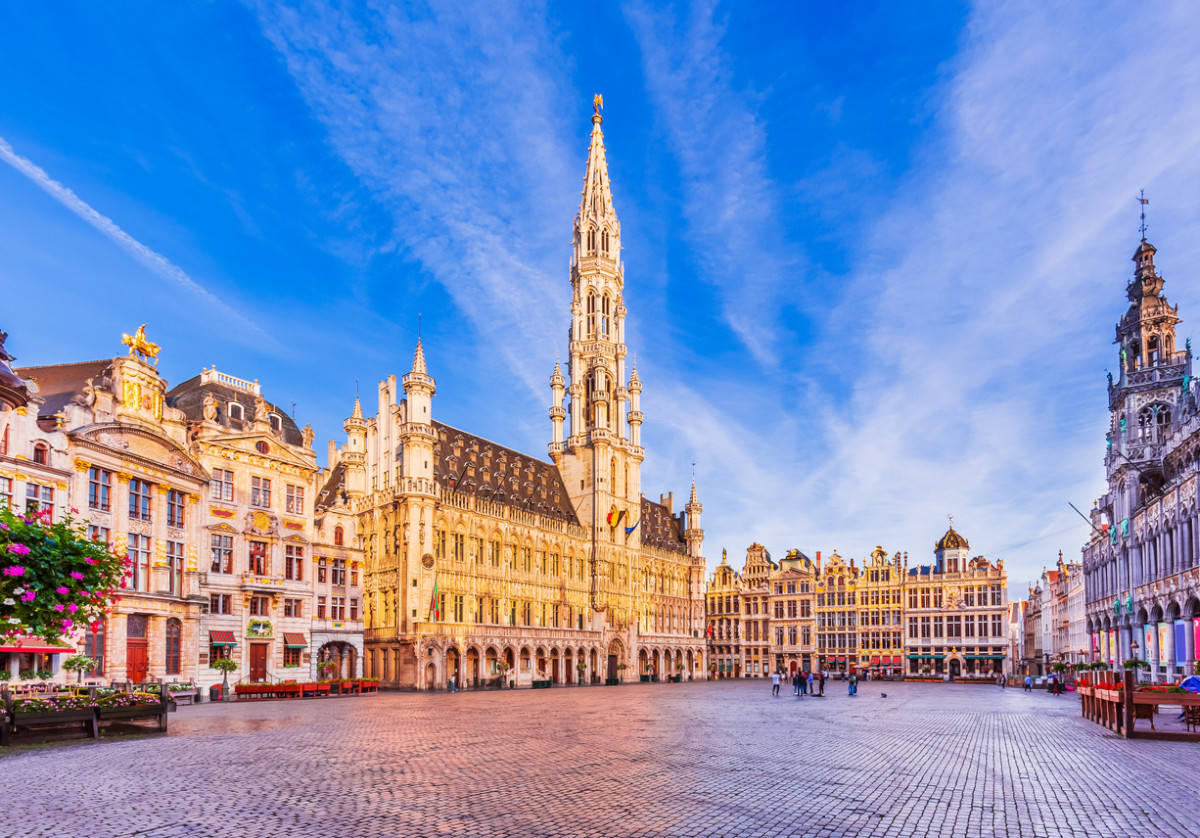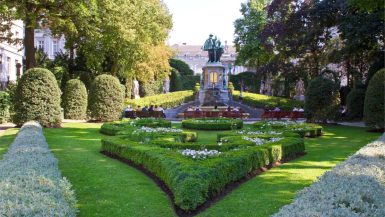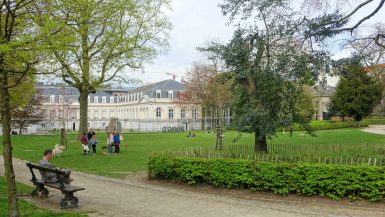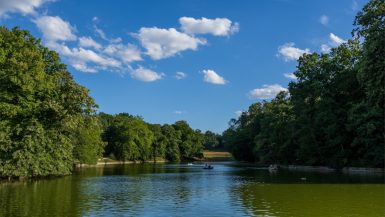The Grand Place (French for Grand Square) or Grote Markt in Dutch (Big Market) is the central square of Brussels. The Grand Place is considered as one of the most beautiful squares in the world. Not surprisingly, the Grand-Place is on the list of the UNESCO World Heritage Site since 1998.
The Grand Place is one of the most visited landmarks of Brussels and by consequence relatively crowd. The Square is home to various restaurants and bars, where you can enjoy a drink or some food on their terrace with the beautiful view of the Square as background. Some big events take also place on the Grand-Place like concerts, Christmas market, …
Location
The Grand Place is located at the center of Brussels. The tower of the Town Hall located on the Square makes it easy to find. The Square is located near the public transport stop of Central Station, Grand Place and Bourse.
Price and Opening hours
The place is free and there is no restriction of access, but the access can be constraints during some events. More information is available on the website of the city of Brussels: www.brussels.be.
History
The Grand Place was the central town square, but also the place of the largest marketplace of the town. That is why it is called Grote Markt in Dutch. Guildhalls where also build all around the Grand Place. Because of the location of the Town Hall, the Grand-Place of Brussels was also a political center. During its history, it was the place of the most important events in Brussels during the centuries.
The construction of the Grand Place started in the 11th century, but the War of the League of Augsburg destroyed most of it in 1695. The bombardments of the city by the French troops destroyed most of the buildings, some of them still made of wood. Only a few walls and the tower of the Town Hall remained after the bombardments.
The buildings were rebuilt and has given the current appearance of the Grand Place. However, some modifications were done during the following centuries. Finally, a big restoration campaign took place at the end of the 19th century.
Buildings
The Town Hall (French: Hôtel de Ville / Dutch: Stadhuis)
Built between 1402 and 1455, it is the only remaining architecture from the middle age period of the Square. The tower of Gothic style has a height of 96 m (315 ft). On the top of it, there is a statue of 2.7 m (8.9 ft) representing Saint Michael (the patron of the City of Brussels) slaying the demon.
The King’s House (French: Maison du Roi / Dutch: Broodhuis)
Since the 12th century, a wooden building was on the place of this building.This early construction sold bread and from there the name of the current building in Dutch, broodhuis (Bread House or Bread Hall). Then A stone building replaced the early construction in the 15th century. This new building was the administrative center of the Duke of Brabant.
The building was named the Duke’s House, but when the Duke became king of Spain, the building was renamed the King’s House. The Emperor Charles V let also the building rebuilt, but in late Gothic style. The building was then looking like the one of today, but without towers and galleries. The building suffered heavy damaged during the bombardments of 1695 and was roughly restored in 1697. In 1767, he got a better restoration. But the building was in such a poor condition that it was destroyed in 1874. The building was rebuilt and the central tower and the galleries were added to the previous version of the building. The building is nowadays the home of the Brussels City Museum and the wardrobe of the Manneken Pis.
No. 1 The King of Spain (French: Le Roy d’Espagne / Dutch: Den Coninck van Spagniën)
The House of the Corporation of Bakers was built in 1696, but it was totally rebuilt in 1901-1902 due to the condition of the building. A busts of St Aubert (patron saint of bakers) and Charles II of Spain decorated the building.
No. 2 and 3 The WheelBarrow (French: La Brouette / Dutch: Den Cruywagen)
It was the location of the House of the corporation of Greasers since the 15th century. The building was built in stone in 1644. The Bombardments of Brussels by the French troops partially destroyed the building. It was rebuilt in 1697 and restored in 1912.
No. 4 The Bag (French: Le Sac / Dutch: Den Sack)
This building was the location of the House of the Corporation of Carpenters since the 15th century. The building was also built in stone in 1644. Like for the No 2 and 3, it was partially destroyed by the French troops and it was rebuilt from the third floor in 1697. The building was restored in 1912. Nowadays the building is occupied by the “La Maison des Maitres Chocolatiers Belges”.
No. 5 The She-Wolf (French: La Louve / Dutch: Den Wolvin)
Built in 1690, the House of the Oath of Archers had the front rebuilt in 1696, with a Phoenix rising from its ashes and rising from the flames. This is the symbol of the reconstruction of the city after the bombardments of the city by the French troops.
No. 6 The Cornet (French: Le Cornet / Dutch: Den Horen)
Rebuilt in 1697, it was the house of the Corporation of the Boatmen since the 15th century. It is worth to notice, that the top of the building shaped like a ship’s stern.
No. 7 The Fox (French: Le Renard / Dutch: Den Vos)
Rebuilt in 1699, it was the House of the Corporation of Haberdashers since the 15th century.
No. 8 The Star (French: L’Étoile / Dutch: De Sterre)
The House of the Amman was rebuilt in 1695. The building was destroyed in 1852 and finally it was rebuilt in 1897.
No. 9 The Swan (French: Le Cygne / Dutch: De Zwane)
In 1720, the House of the Corporation of Butchers bought this rebuilt Mansion from 1698. The corporation transformed the upper part of the building. Then, the building was restored between 1896 and 1904. The Foundation Congress of the “Parti ouvrier belge” (Worker’s Party of Belgium) took place in this building in April 1885. Karl Marx also passed by this building during his stays in Brussels.
No. 10 The Golden Tree (French: L’Arbre d’Or / Dutch : Den Gulden Boom)
The building dated from 1696, with a restoration in 1901. The statue on the top represents Charles Alexander of Lorraine. Set in 1752, it replaced a statue of Maximilian Emanuel of Bavaria. The building was the House of the Corporation of Brewers and today it is the home to the Belgian Brewer Museum.
No. 11 The Rose (French: La Rose / Dutch: De Roos)
Private house rebuilt in 1702 and then restored in 1901.
No. 12 The Mount Thabor (French: Le Mont Thabor / Dutch: Den berg Thabor)
Private house rebuilt in 1699 and then restored in 1885.
No. 12a House of Alsemberg – The King of Bavaria (French: Maison d’Alsemberg – Le Roi de Bavière / Dutch: Huis van Alsemberg – De Koning van Beieren)
Private House rebuilt in 1699. This building was previously the no. 2-4 from the rue des Chapeliers / Hoedenmakersstraat. The building is called the House of Alsemberg, but also sometimes The House of The King of Bavaria.
No. 13-19 House of the Dukes of Brabant (French: Maison des Ducs de Brabant / Dutch: Huis van de Hertogen van Brabant)
The House of the Dukes of Brabant is a set of seven buildings on the back of a majestic facade. Build in 1698, it was after that modified in 1770. Finally, it was restored between 1881 and 1890.
The seven houses inside the building are:
- No. 13 The Fame (French: La Renomée / Dutch: De Faem): private house
- No. 14 The Hermitage (French: L’Ermitage / Dutch: De Cluyse): House of the Corporation of Carpet Makers
- No. 15 The Fortune (French: La Fortune / Dutch: De Fortuin): House of the Corporation of Tanners
- No. 16 The Windmill (French: Le Moulin à Vent / Dutch: De Windmolen): House of the Corporation of Millers
- No. 17 The Tin Pot (French: Le Pot d’Étain / Dutch: The Tinnepot): House of the Corporation of Cartwrights
- No. 18 The Hill (French: La colline / Dutch: De Heuvel): House of the Corporation of Sculptors, Masons, Stone-Cutters and Slate-Cutters
- No. 19 The Purse (French: La Bourse / Dutch : De Borse): private house
No. 20 The Deer (French: Le Cerf / Dutch: Den Hert)
Private house rebuilt in 1710 and then restored in 1897.
No. 21-22 Joseph and Anne (French: Joseph et Anne / Dutch: Joseph and Anna)
Private house rebuilt in 1897, based on a painting of 1729.
No. 23 The Angel (French: L’Ange / Dutch: Den Engel)
Private house of a merchant, it was rebuilt in 1697 and restored after that in 1897, based on old paintings.
No. 24-25 The Golden Boat (French: La Chaloupe d’Or / Dutch: Den Gulden Boot)
The House of the Corporation of Tailors was built in 1697. On the top of the building there is a statue of Saint Homobonus, the Patron Saint of the tailors. The current bust above the entry represent Saint Barbara and it is dated from 1872.
No. 26-27 The Dove (French: Le Pigeon / Dutch: De Duif)
House of the Corporation of Painters since the 15th century, it was sell in 1697 to an architect. The building was restored in 1908. The famous Victor Hugo lived in this building during his stay in Brussels at the end 1851 and in 1852.
No. 28 The Golden Merchant – The Weapons of Brabant (French: Le Marchand d’Or – Aux Armes de Brabant / Dutch: De Gulden Koopman – De wapens van Brabant)
Private home that was rebuilt in 1709 and then restored in 1882.
No. 29-33 The King’s House (French: Maison du Roi / Dutch: Broodhuis)
No. 34 The Helmet (French: Le Heaume / Dutch: Den Helm)
Private house restored in 1920.
No. 35 The Peacock (French: Le Paon / Den Pauw)
Private house restored in the 1882, the top of the building is typical of home from the 18th century.
No. 36-37 The Small Fox or The Samaritan and The Oak (French: Le Petit Renard ou Le Samaritain et Le Chêne / Dutch: ‘t Voske of De Samaritaen en Den Eycke)
The 2 private houses are from 1696 and after that restored between 1884 and 1886.
No. 38 Saint Barbara (French: Sainte-Barbe / Dutch: Sint Barbara)
Private house from 1696.
No. 39 The Donkey (French: L’Âne / Dutch: Den Ezel)
Private house restored in 1916.





